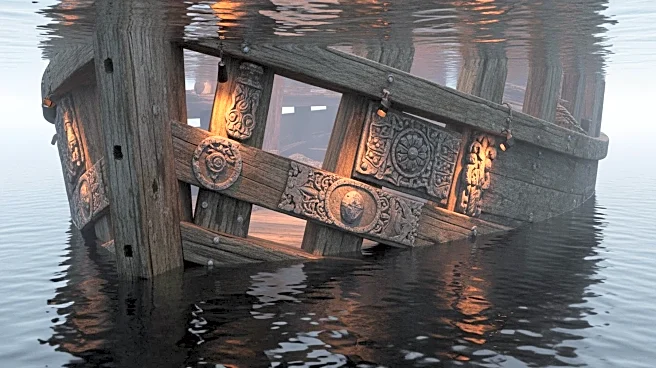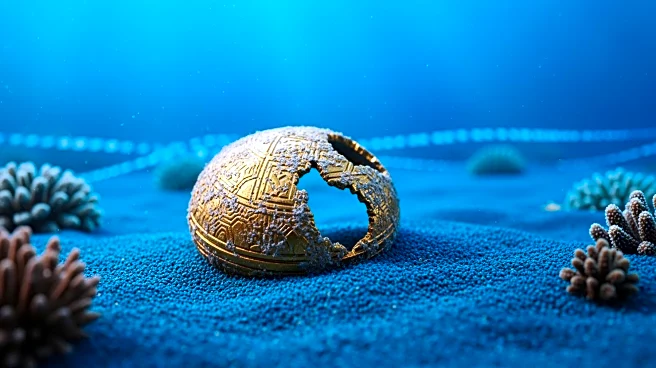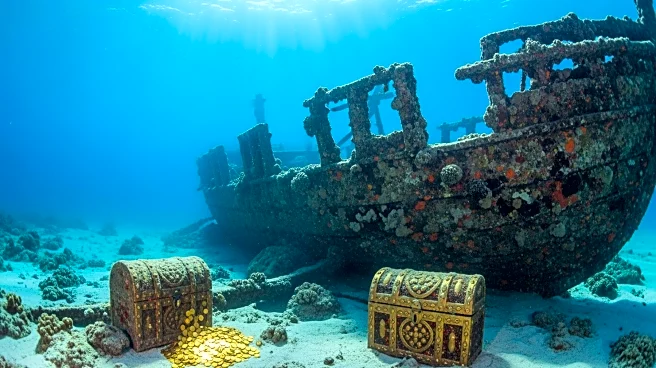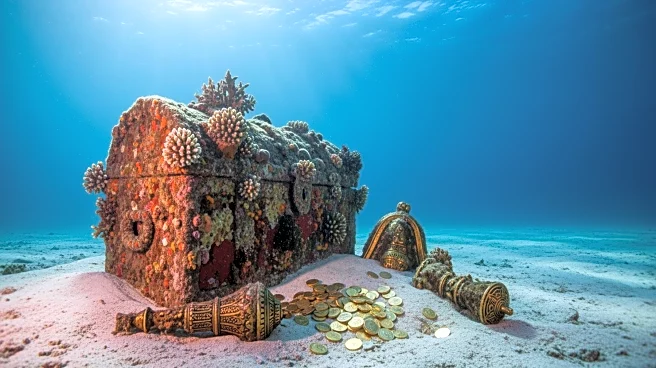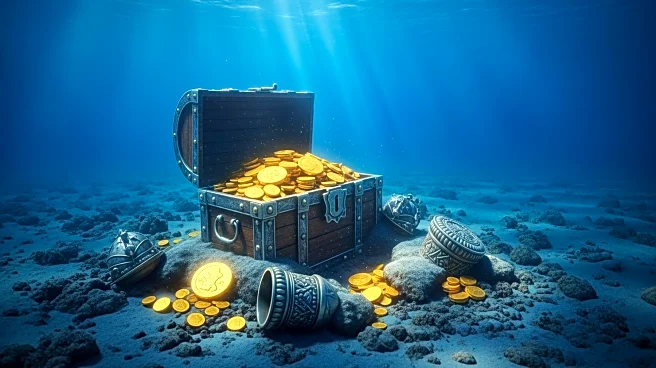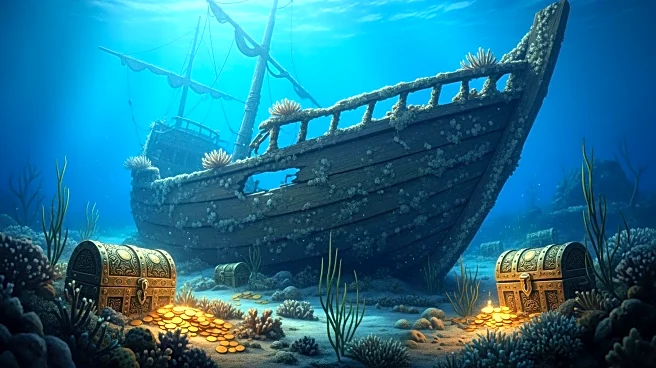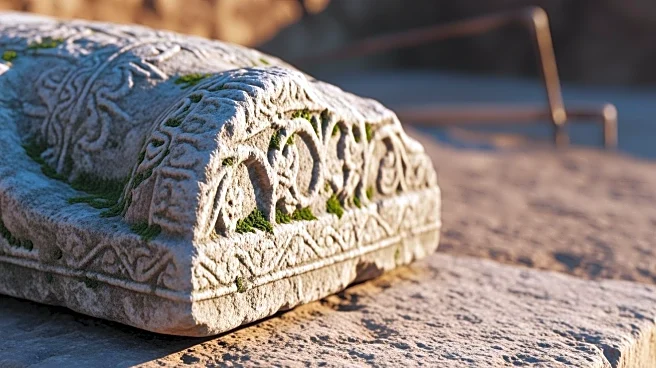What's Happening?
The Mary Rose, a Tudor-era warship commissioned by King Henry VIII, was discovered near the Isle of Wight by British military historian Alexander McKee in 1971. The ship, which sank in 1545 during a battle against the French fleet, was found almost completely
intact due to preservation by soft silt and oxygen-free waters. The discovery included a wealth of Tudor-era artifacts, such as dinner plates with King Henry's initials, leather falconry gloves, and human bones indicating a diverse crew. The ship's recovery revealed over 8,300 weapons, including guns, longbows, and arrows, earning the Mary Rose Trust a Guinness World Record. The ship and its artifacts are now displayed at the Mary Rose Museum in Portsmouth.
Why It's Important?
The recovery of the Mary Rose provides invaluable insights into Tudor naval history and the cultural composition of its crew. The artifacts challenge previous assumptions about the diversity of sailors during the era, suggesting a more multicultural navy than previously thought. The preservation of the ship and its contents offers a unique glimpse into 16th-century maritime warfare and daily life aboard a warship. The discovery has significant implications for historical research, enhancing understanding of naval architecture, weaponry, and the socio-political context of the time. The Mary Rose's exhibition at the museum serves as an educational resource, attracting visitors and scholars interested in maritime history.
What's Next?
The ongoing preservation and study of the Mary Rose and its artifacts continue to provide opportunities for research and education. Scholars may further investigate the ship's construction, crew composition, and the circumstances of its sinking. The museum's exhibitions may expand to include interactive displays and educational programs, engaging a wider audience and fostering interest in maritime history. Future archaeological endeavors may focus on uncovering additional shipwrecks from the Tudor period, contributing to a more comprehensive understanding of naval history.
Beyond the Headlines
The discovery of the Mary Rose highlights the importance of underwater archaeology in uncovering historical treasures. It underscores the potential for technological advancements in preservation techniques, ensuring the longevity of artifacts recovered from shipwrecks. The ship's multicultural crew challenges traditional narratives of English naval history, prompting a reevaluation of the social dynamics and interactions within the navy. The Mary Rose serves as a symbol of historical resilience, offering lessons on the impact of environmental factors on preservation and the significance of cultural heritage.
